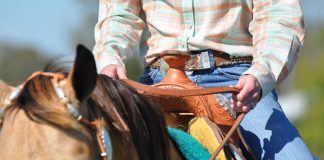Q. I completed a successful eventing season at Novice Level last year and plan to move up to Training Level this year. I am worried about having cross-country time faults at Training. Do you have any advice?
Although you’ve gained solid competitive experience from your novice season, seek professional help—or at least consult an experienced eventing friend for assistance in developing a training program and learning what’s required at this new level. Get used to jumping 3’3” courses by attending some local schooling shows that offer this height. School cross-country to practice some of the new scenarios your horse will face at Training Level, such as jumping into water.
When you’re ready for your first Training Level event, beating the clock cross-country should be your lowest priority. Instead, ride the jumps safely and don’t worry about time faults. Build your confidence first; going faster will follow.
Experience will teach you that preventing time faults has less to do with going fast and more to do with riding smarter. Learn to get away from your jumps quickly. Once you’ve safely jumped a fence, put your leg on at landing and move away promptly. You’ll easily gain one or two seconds per fence (which, times 14 or 15 fences, may take care of time faults right there). As your horse becomes more schooled, learn to slow down and rebalance him for each fence in fewer strides, saving considerable time. Learn to gallop ahead of the required speed on the straight, flat areas without jumps, to compensate for the places where safety demands that you slow down. Finally, make time-saving plans as you walk your courses, knowing what turns you may cut safely and sticking to the inside track whenever possible.
Experience should enable you to safely complete your Training Level cross-country courses without time faults. Just give yourself the time you need to learn.
Expert: Annie Eldridge is an event rider who trains out of her Setters’ Run Farm in Duxbury, Mass.







This was an interesting and well written article